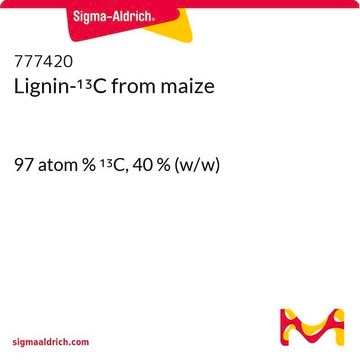Recommended Products
description
surface tension 43 mN/m (1% aqueous)
form
powder
impurities
5% moisture
loss
13.4 wt. % loss on heating, @ 316°C
3.3 wt. % loss on heating, @ 149°C
5.7 wt. % loss on heating, @ 204°C
8.5 wt. % loss on heating, @ 260°C
pH
6.5 (25 °C, 5%, aqueous solution)
transition temp
sintering point 188 °C
solubility
NaOH: 0.05% (warm 5% aquesous)
MEK: partially soluble
benzene: insoluble
dioxane: soluble
ethylene glycol: soluble
hexane: insoluble
methanol: partially soluble
density
1.3 g/mL at 25 °C
bulk density
23 lb/cu.ft (loose)
32 lb/cu.ft (packed)
Looking for similar products? Visit Product Comparison Guide
Related Categories
General description
Application
Storage Class Code
11 - Combustible Solids
WGK
WGK 3
Flash Point(F)
Not applicable
Flash Point(C)
Not applicable
Personal Protective Equipment
Certificates of Analysis (COA)
Search for Certificates of Analysis (COA) by entering the products Lot/Batch Number. Lot and Batch Numbers can be found on a product’s label following the words ‘Lot’ or ‘Batch’.
Already Own This Product?
Find documentation for the products that you have recently purchased in the Document Library.
Our team of scientists has experience in all areas of research including Life Science, Material Science, Chemical Synthesis, Chromatography, Analytical and many others.
Contact Technical Service







